
My journal. Africa Trip, March 9 – April 6, 2016

The camp site at Halali was much like the one at Namutoni except that we encountered Don and Donna Jepsen-

Halali is also the place where I took a break while the family went swimming in quite a large outdoor pool, and ended up in a long and interesting conversation with Kobus and Elna Rossouw of Johannesburg. He a lawyer, head of a firm, and she a journalism lecturer at the university. They are Afrikaners. We spoke a good deal about their experience with apartheid, their unquestioning somnolence as the new Afrikaner government began to move people around from their ancestral homesteads into new lands rather as Donald Trump is proposing for Mexicans and Muslims today.
But to continue with the animal show from the page before, I want to point out that these animals were seen either on the way into Halali or on the way out the next day, the drive being along the Etosha Pan before and after.
So here is the gemsbok or oryx, seen with two zebras horsing around behind it:

The gemsbok seems to me to have been the animal most likely to see in very, very desolate countryside. Like this (which is from day eight, way farther south in the Sossusvlei dune area:
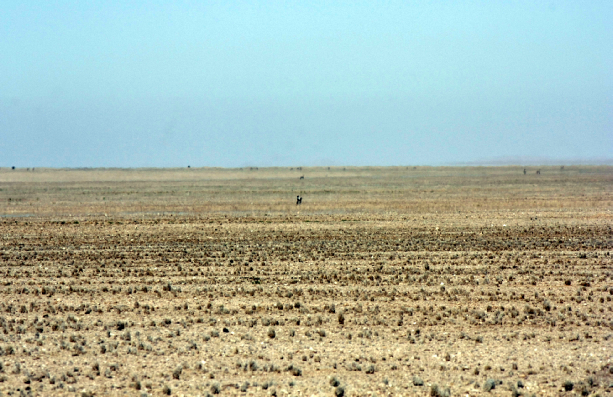
Margaret confirmed with the binoculars that this was indeed an Oryx (Gemsbok). There appear to be more of them in the distance behind the closer one. My telephoto lens at 1/1000 and f 11 does not bring in enough detail to be sure from the photo alone. As in, the animal is far away. (And binoculars can be very useful.)
Now a nice zebra family:
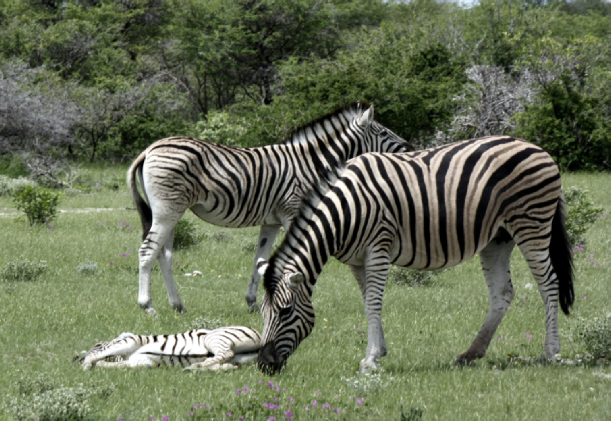
And a very loud bird that got our attention by its croaking as we drove along. We stopped and found it right beside us:
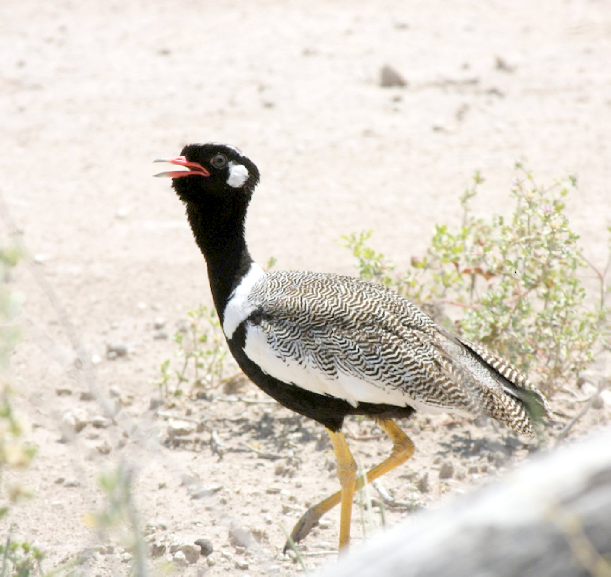
This is the northern black korhaan. And yes, there is a very similar southern version. Way farther south than we were, however.
What an ostrich usually looks like from the road:

But sometimes you get this:
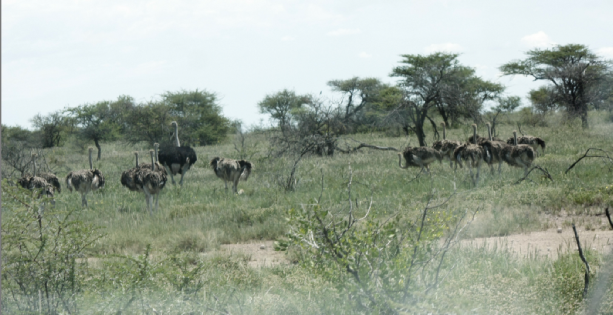
It’s strange that there are so many smaller ones here. Chicks I guess. One reads in the bird book that most ostriches found across Southern Africa are from domesticated hybrids of a smaller Somali variety. But in our case, the one dark bird hugely larger than the chicks seen above fits the book image of a common ostrich male (so called in the book). And in the photo just below we see that dark bird, huge way in the back while there is a larger, female bird also just left of center.
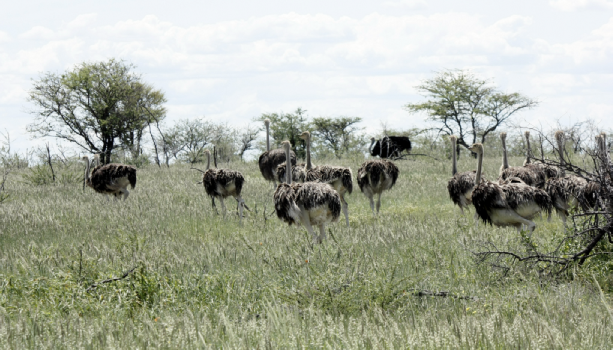
I read in the bird book that the voice is a “booming, lion-
And here’s another big ungulate. (Wikipedia: Ungulates … are any members of a diverse clade of primarily large mammals that includes odd-
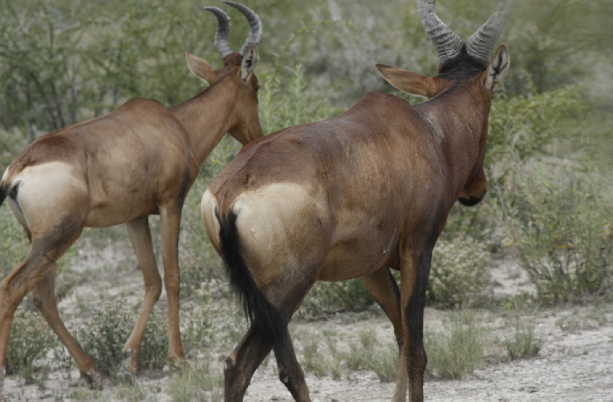
Kyle told me the name suggests the heart-
Speaking of large animals, let’s jump to a new page for the elephants.
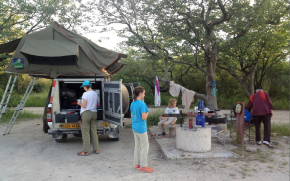
Click the pic for camp set-
| Namibia Day by Day |
| The Lion Park |
| Tour of Soweto |
| Setting up camp atHalali |
| Eric pix of Mowani camp area |
| Panorama with Bob somewhere |
| Tour of Soweta 2 |
| Tour of Soweto 3 |
| Setting up camp atHalali |
| Eric pix of Mowani camp area |
| Panorama with Bob somewhere |
| Setting up camp atHalali |